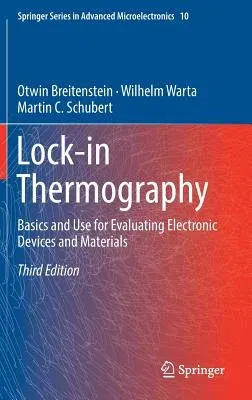Otwin Breitenstein
(Author)Lock-In Thermography: Basics and Use for Evaluating Electronic Devices and Materials (2018)Hardcover - 2018, 22 January 2019

Qty
1
Turbo
Ships in 2 - 3 days
In Stock
Free Delivery
Cash on Delivery
15 Days
Free Returns
Secure Checkout

Part of Series
Springer Advanced Microelectronics
Part of Series
Springer Series in Advanced Microelectronics
Print Length
321 pages
Language
English
Publisher
Springer
Date Published
22 Jan 2019
ISBN-10
3319998242
ISBN-13
9783319998244
Description
Product Details
Book Edition:
2018
Book Format:
Hardcover
Country of Origin:
NL
Date Published:
22 January 2019
Dimensions:
23.39 x
15.6 x
2.06 cm
ISBN-10:
3319998242
ISBN-13:
9783319998244
Language:
English
Location:
Cham
Pages:
321
Publisher:
Weight:
657.71 gm